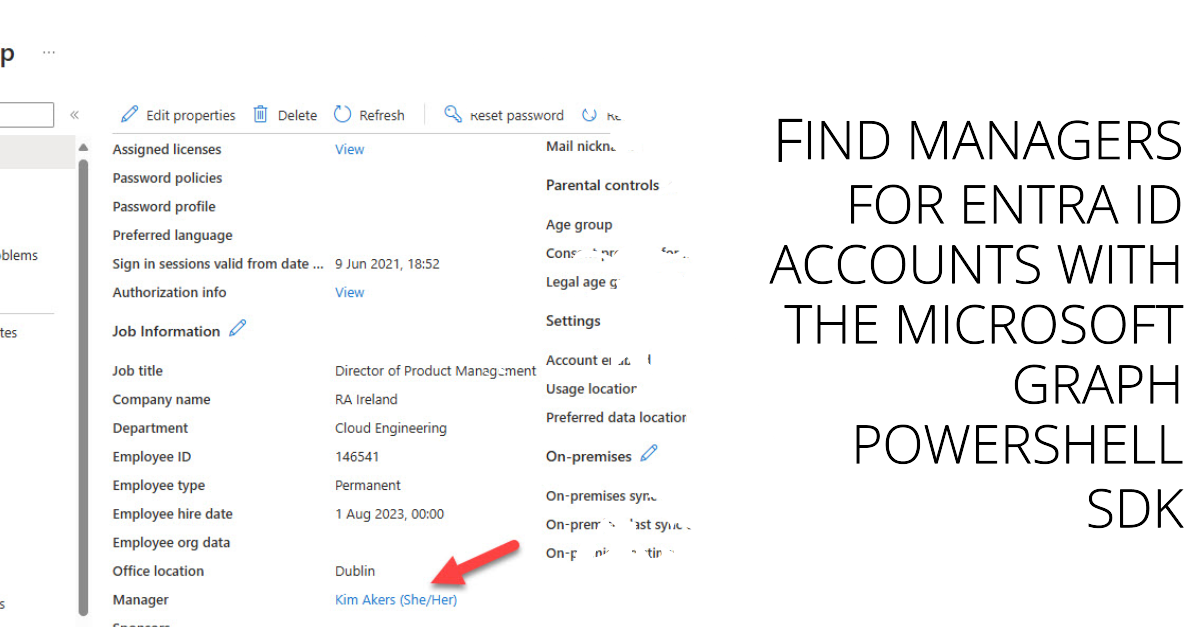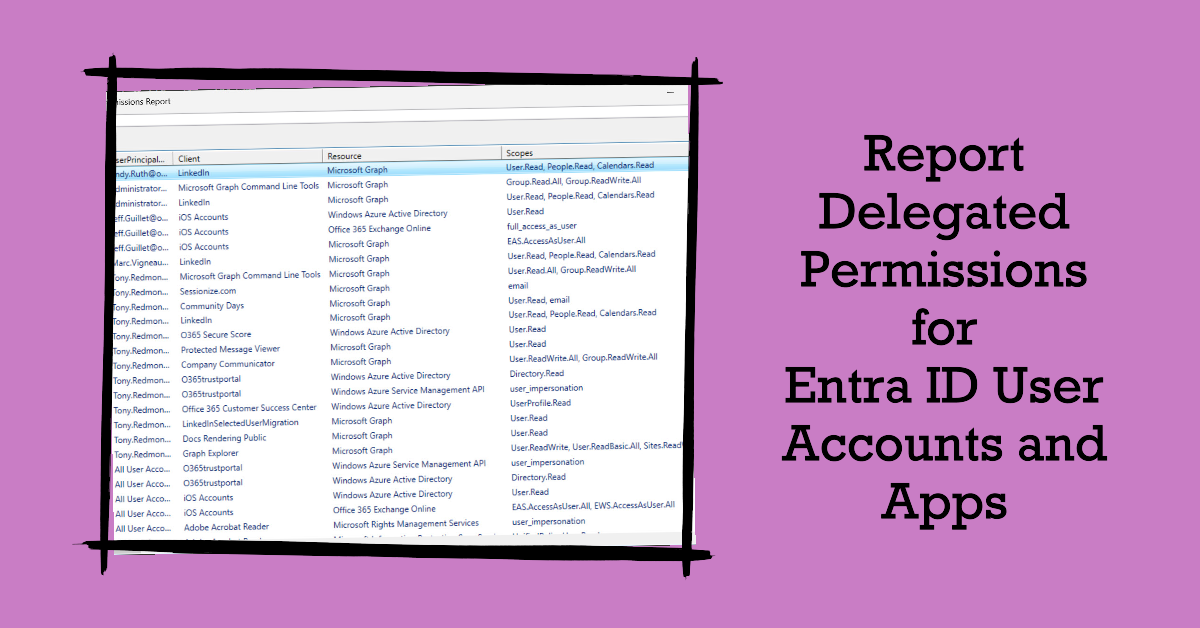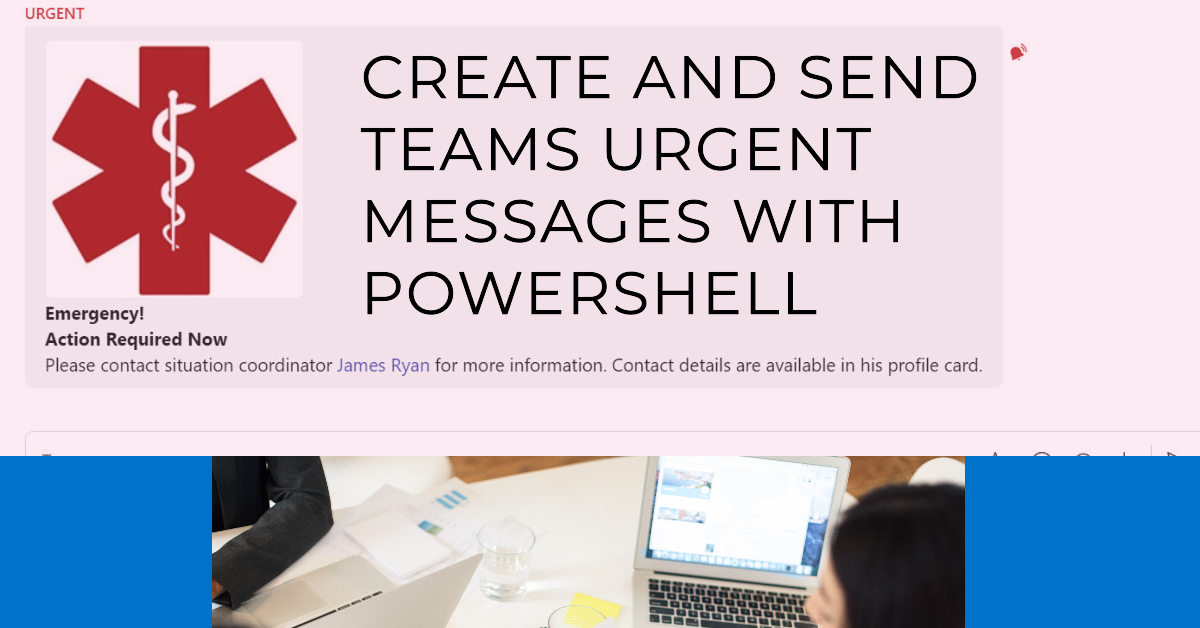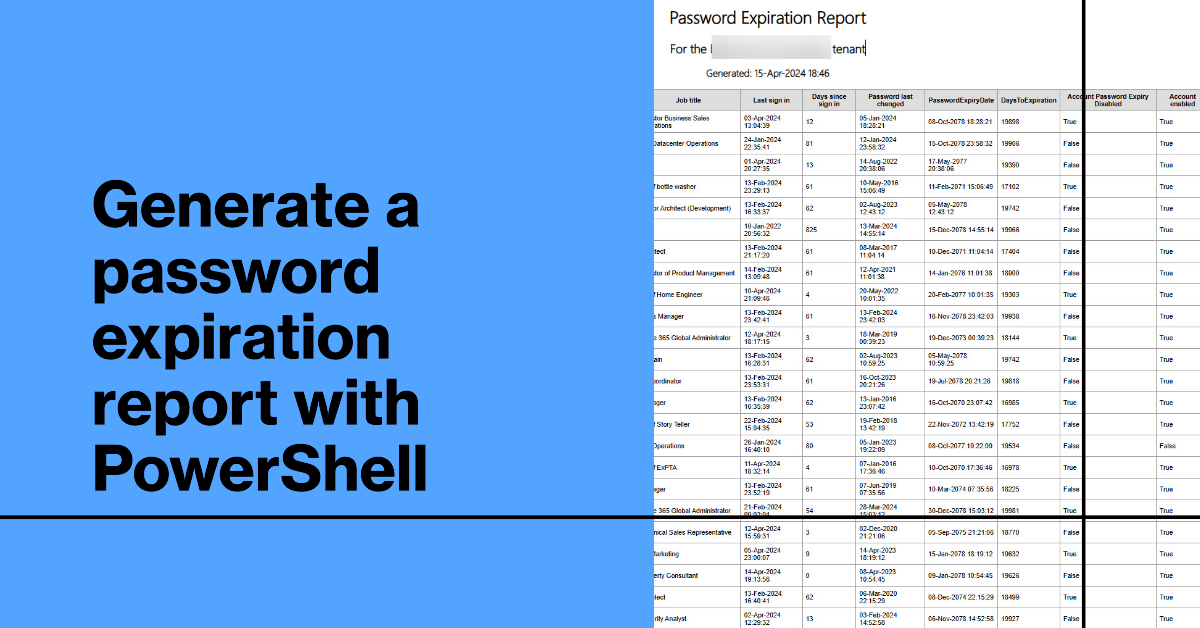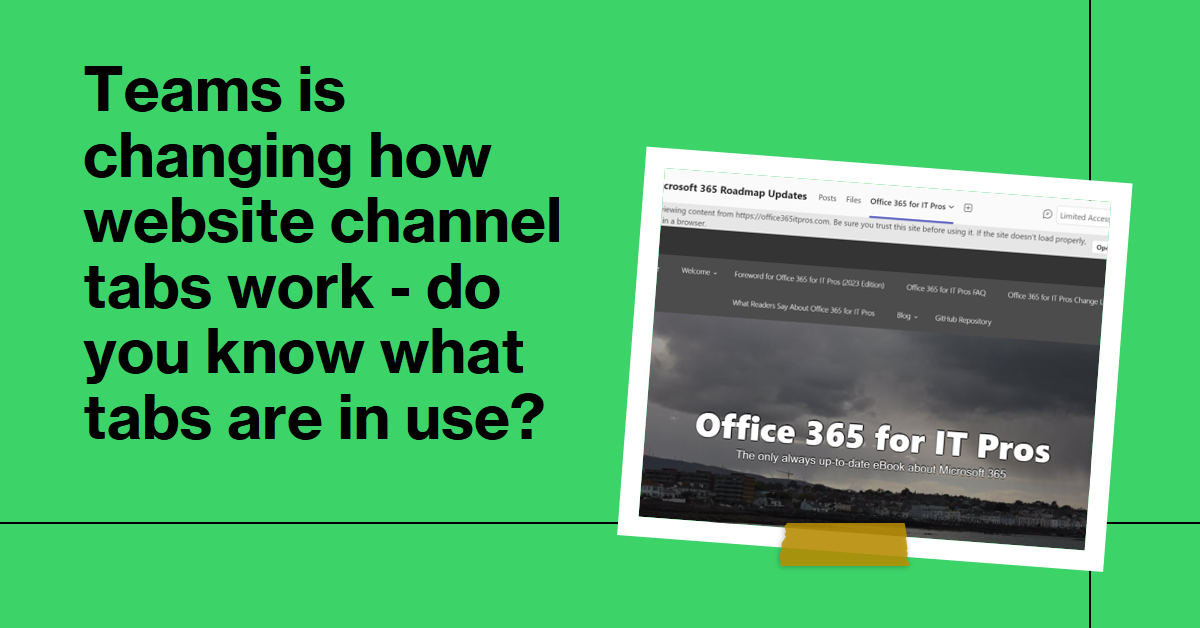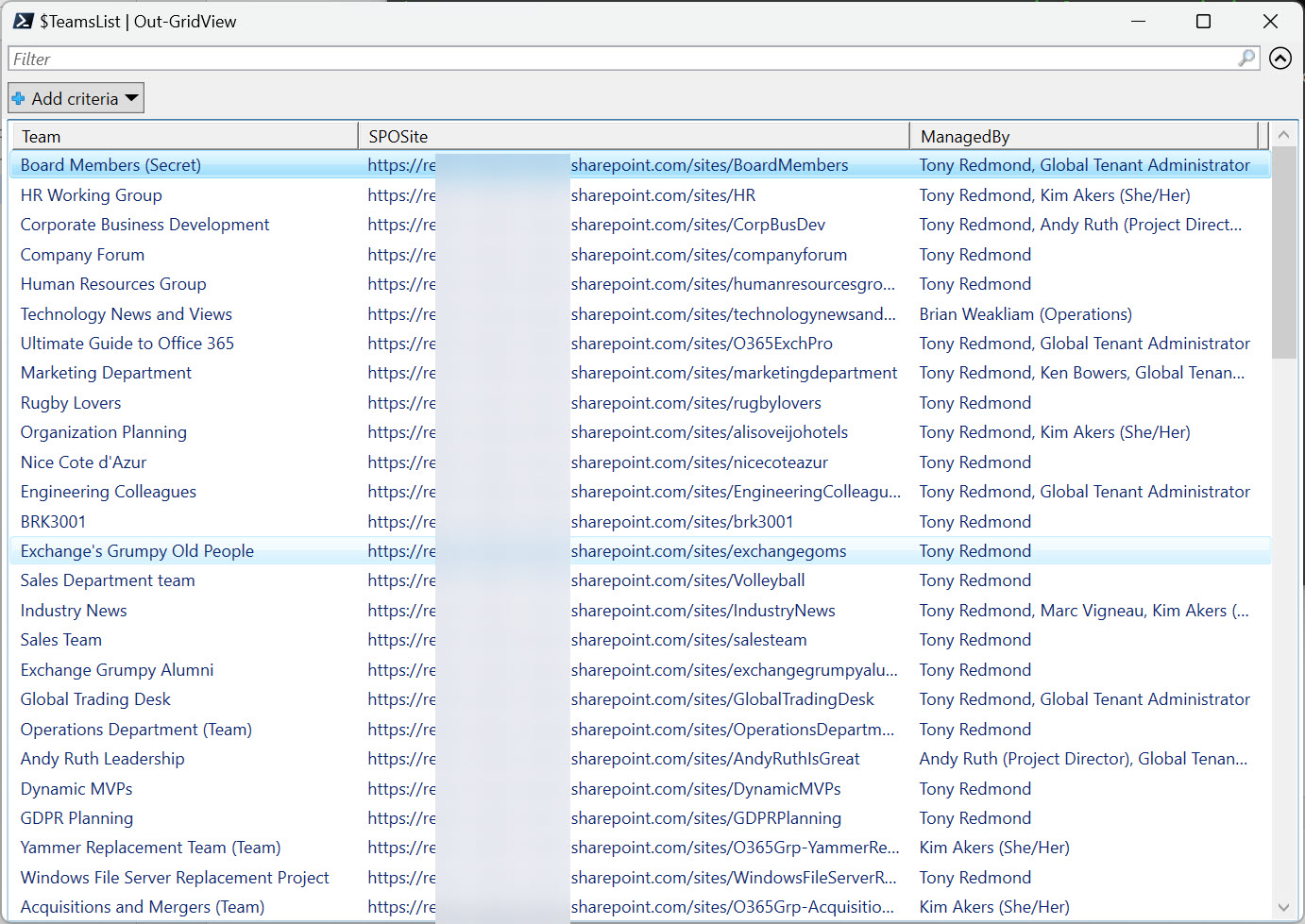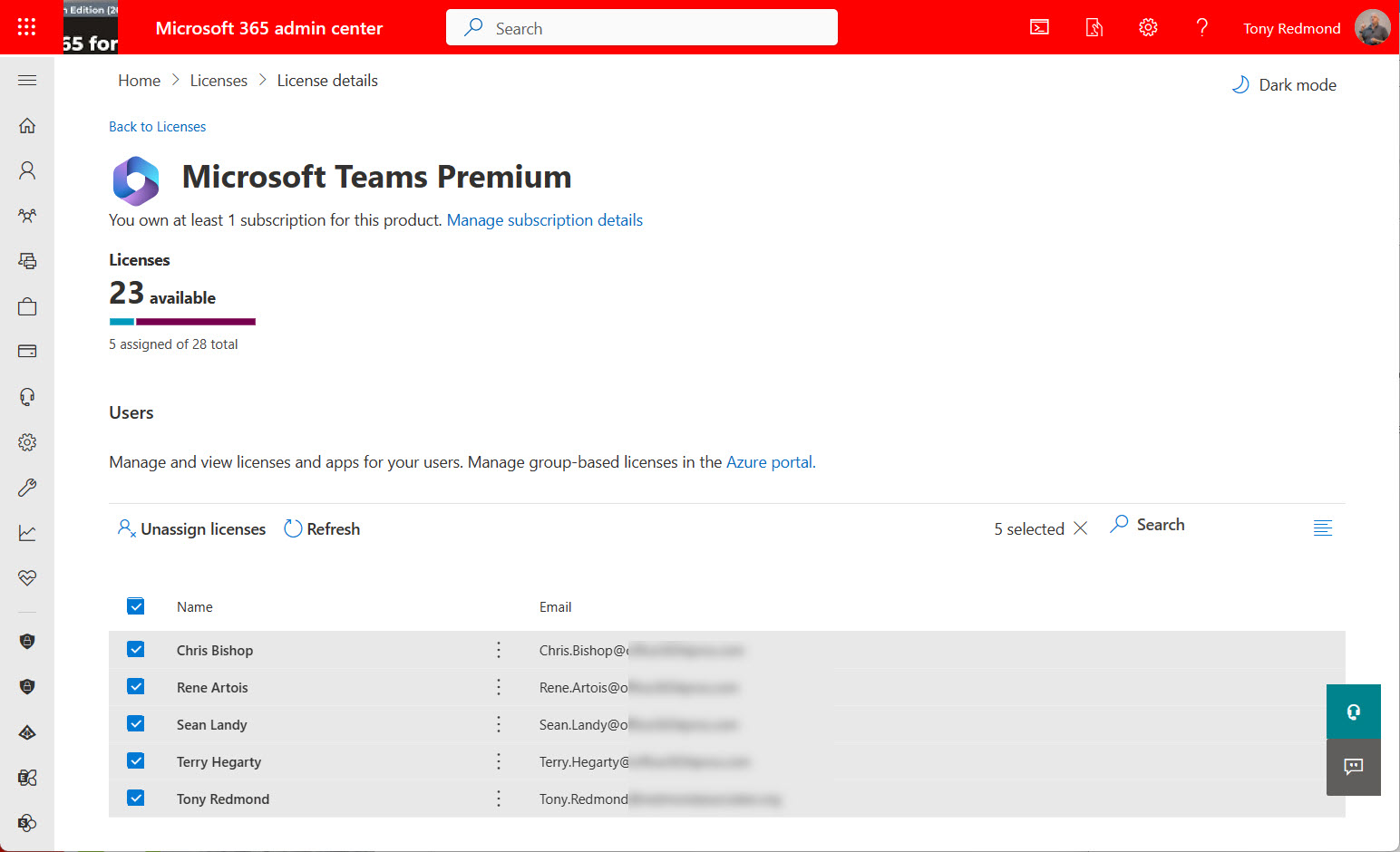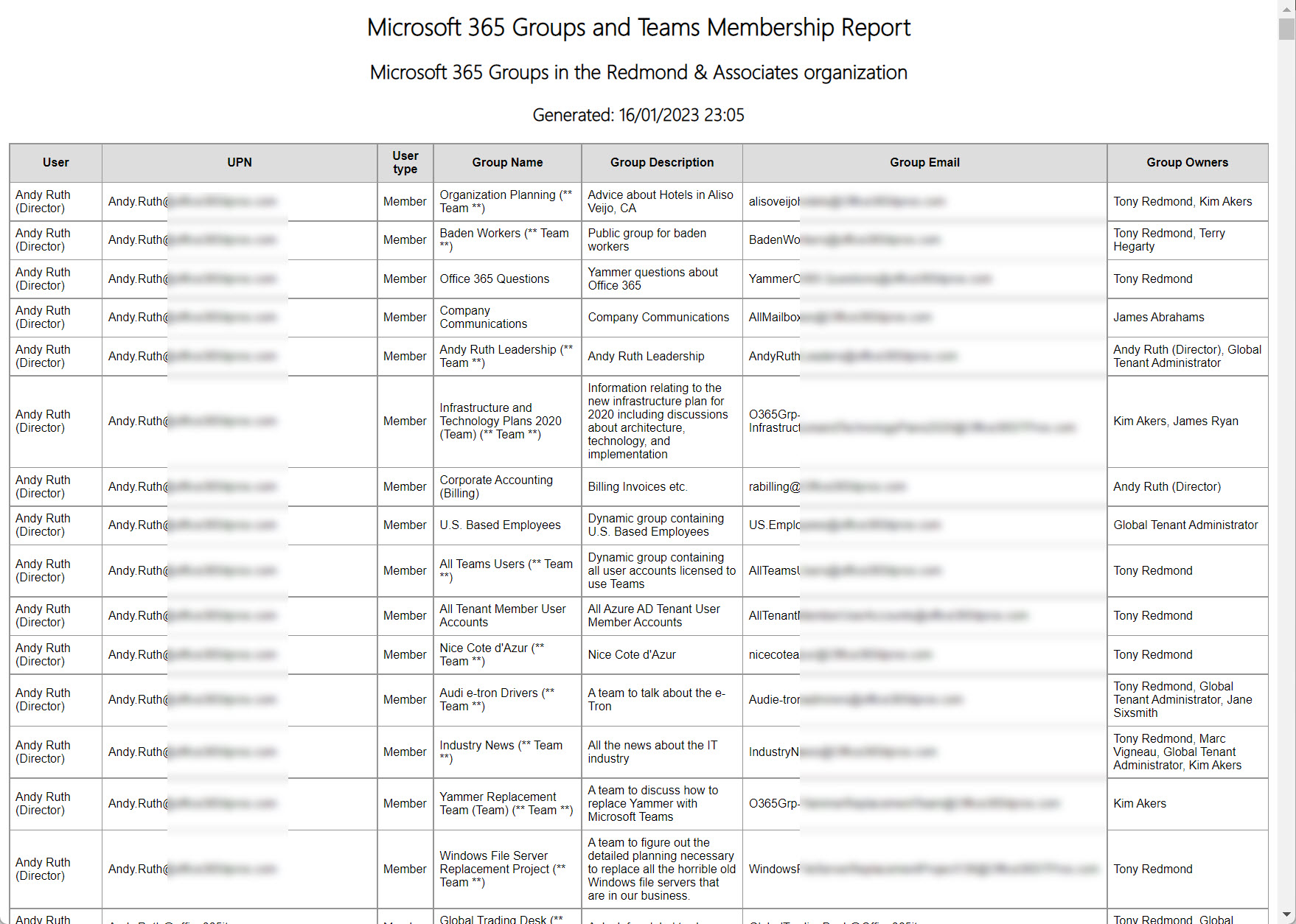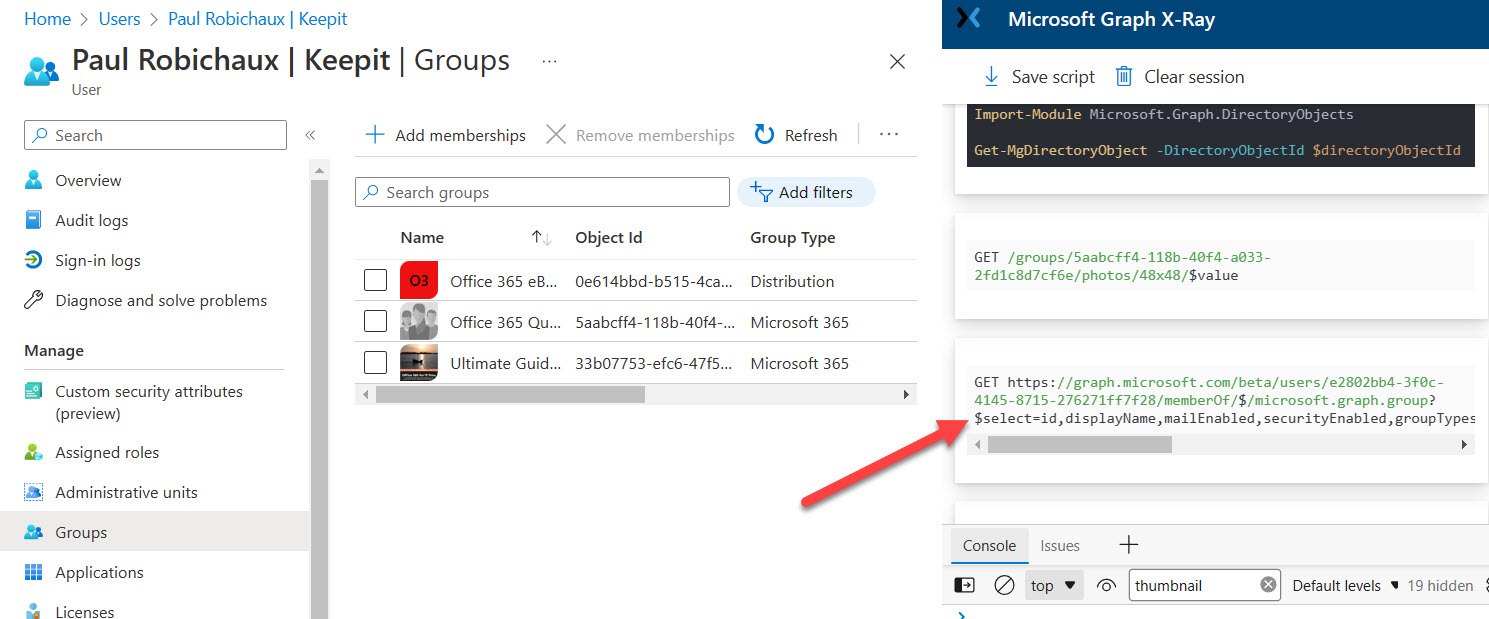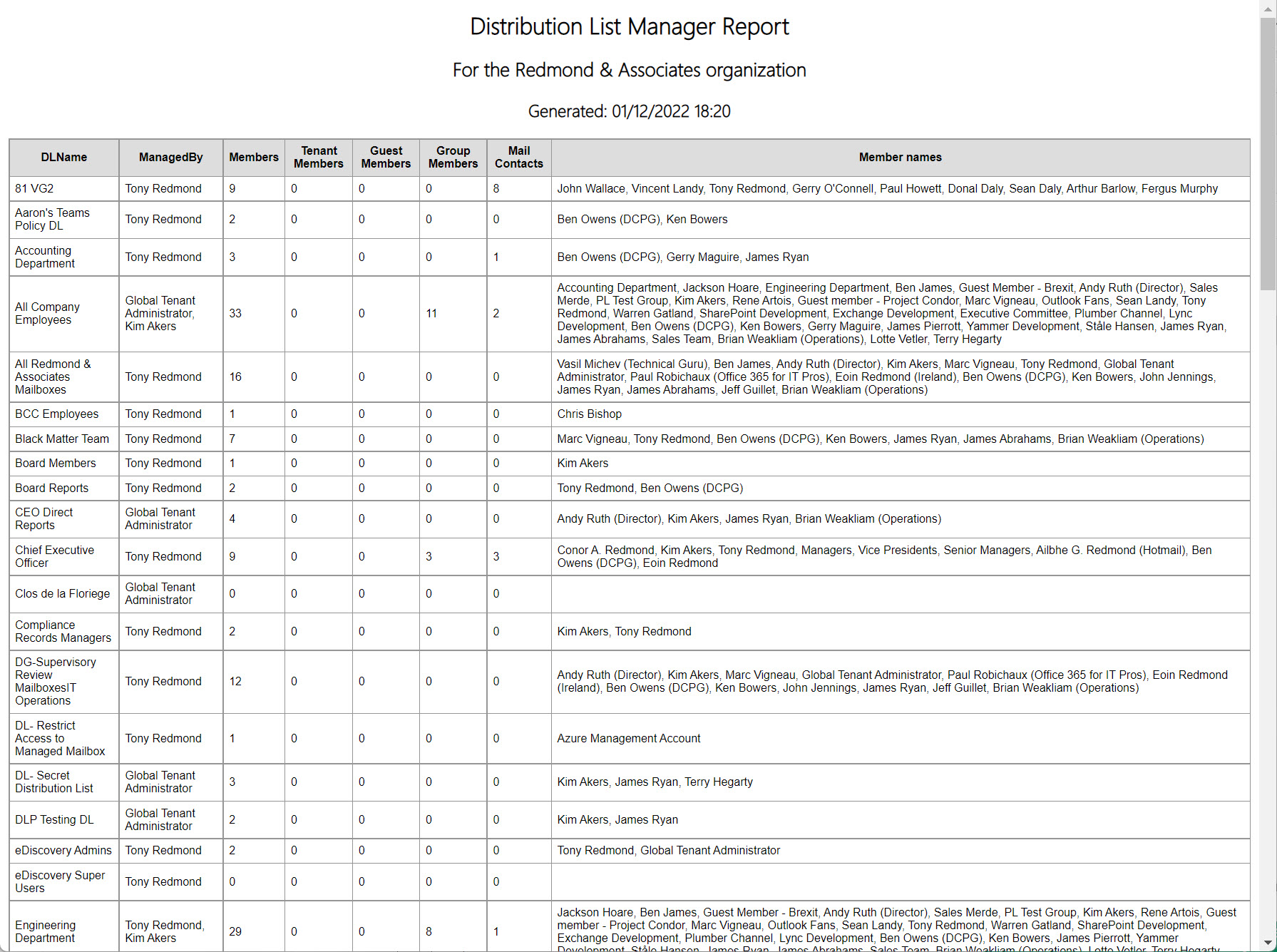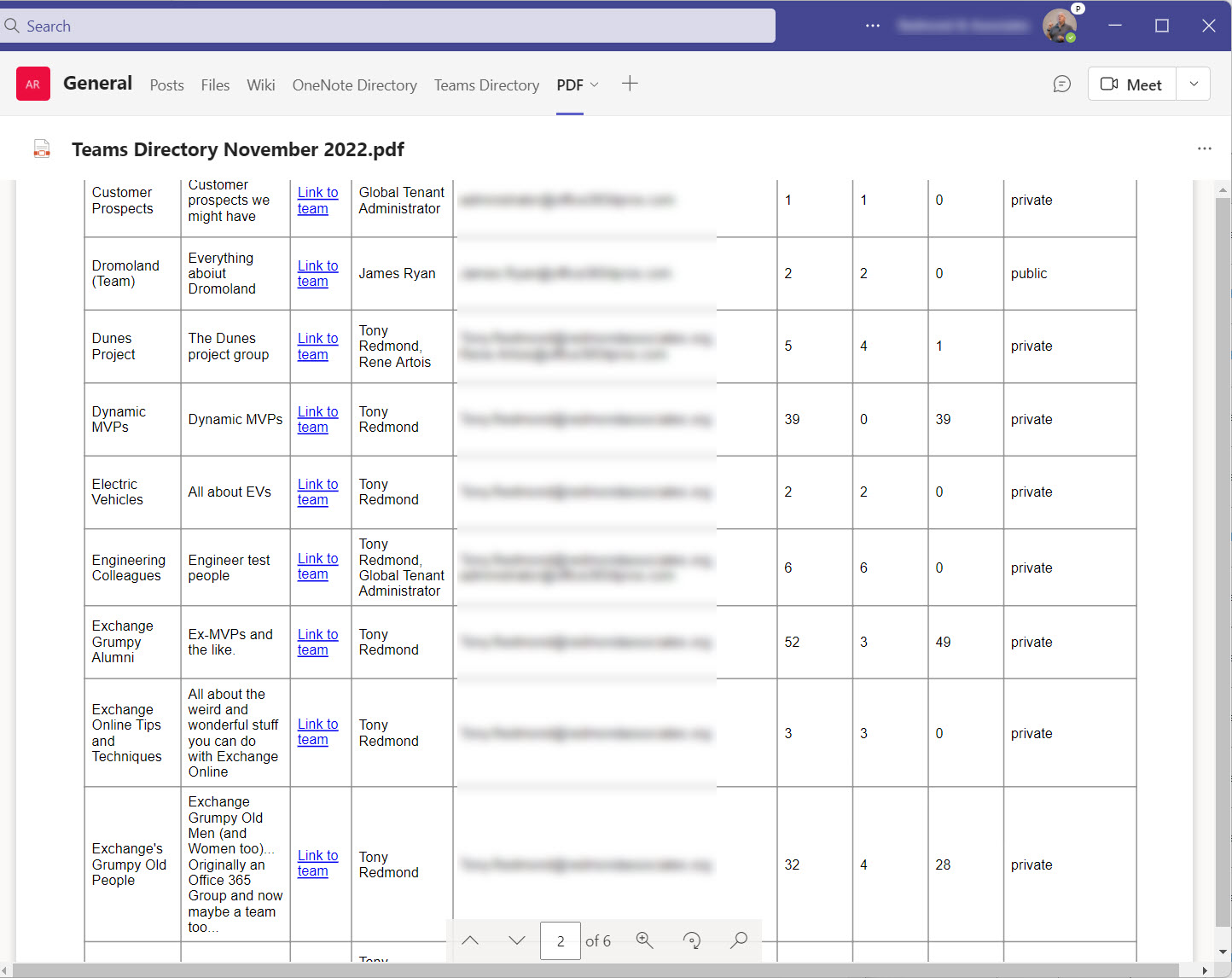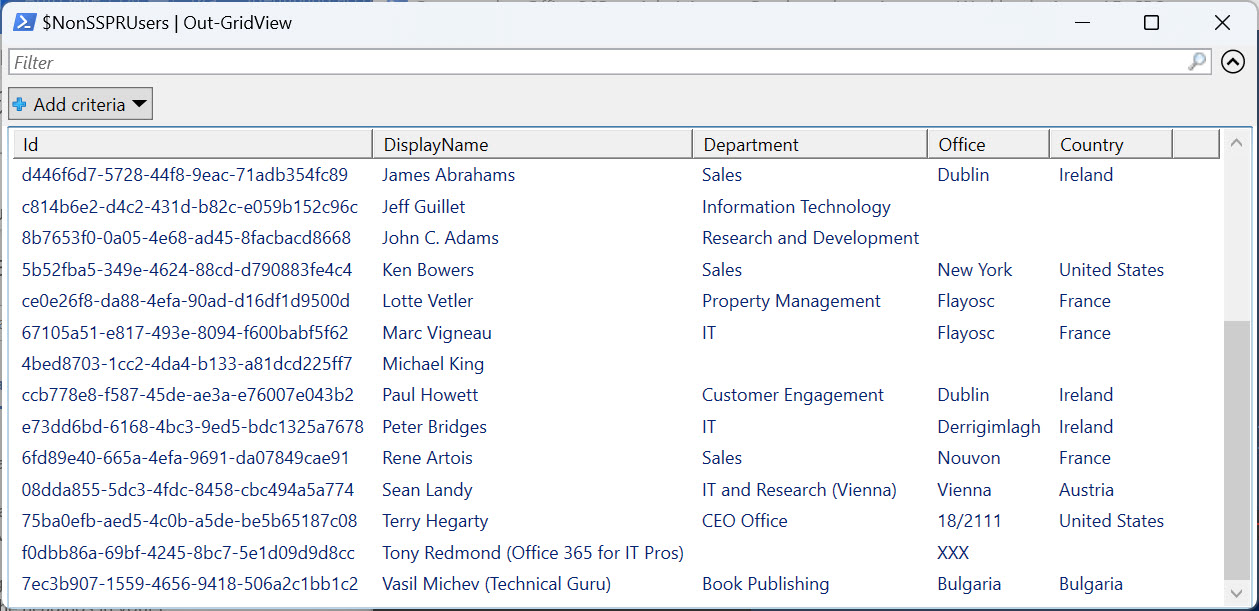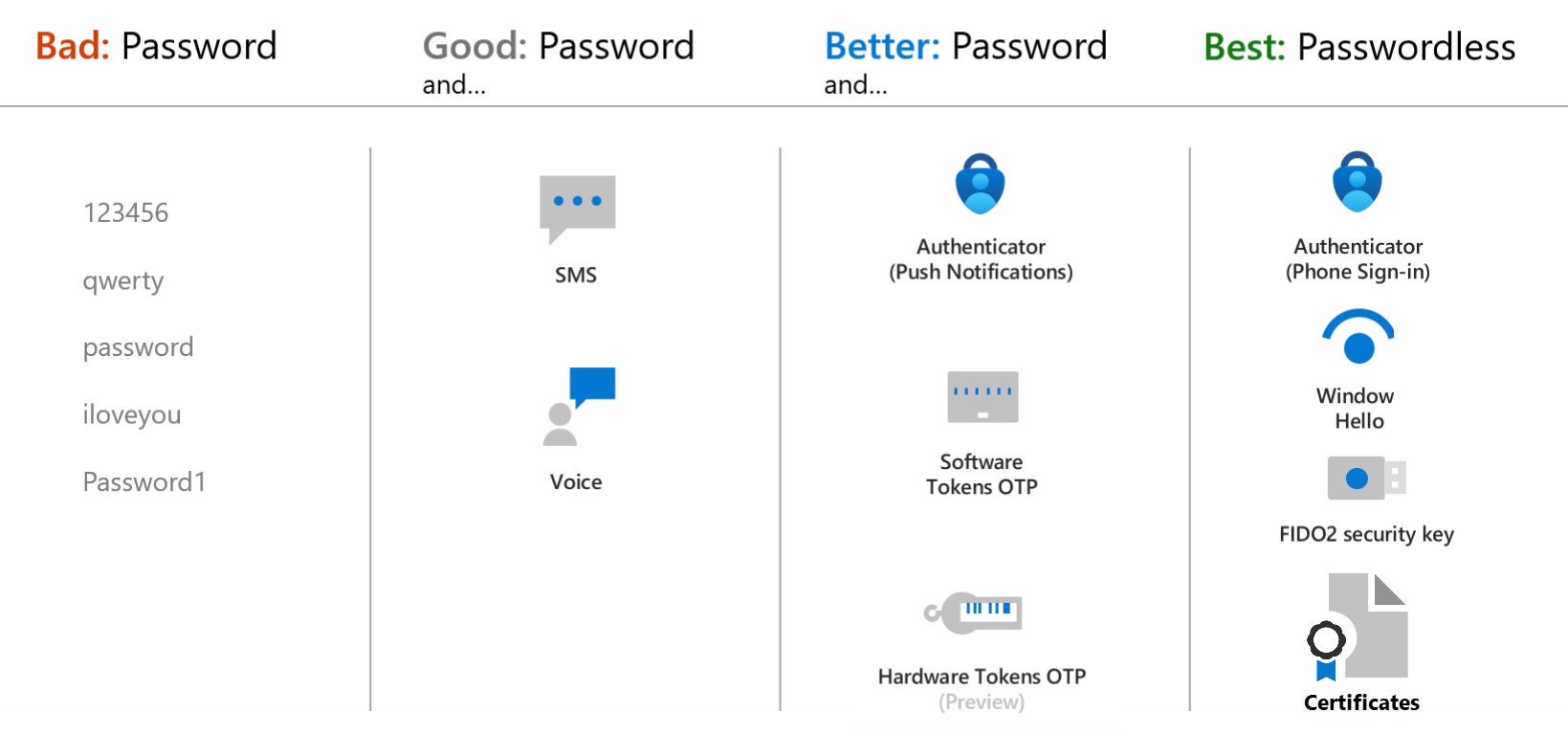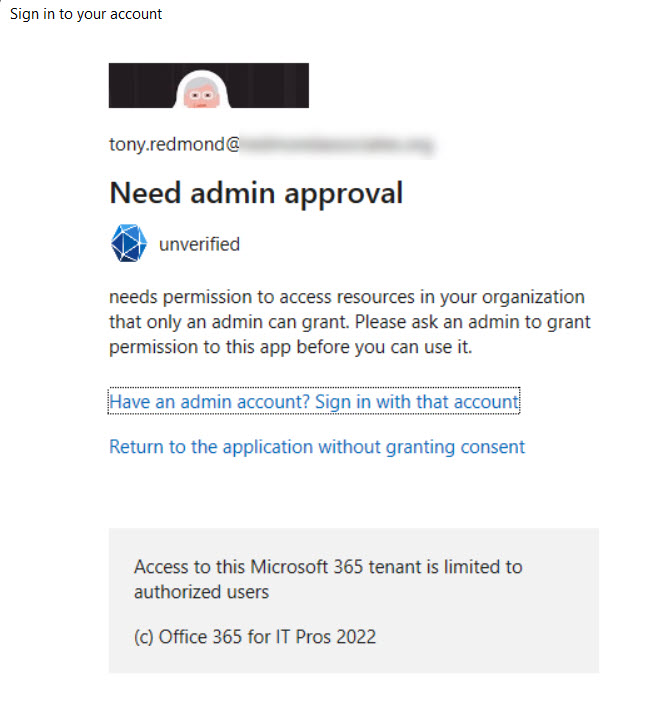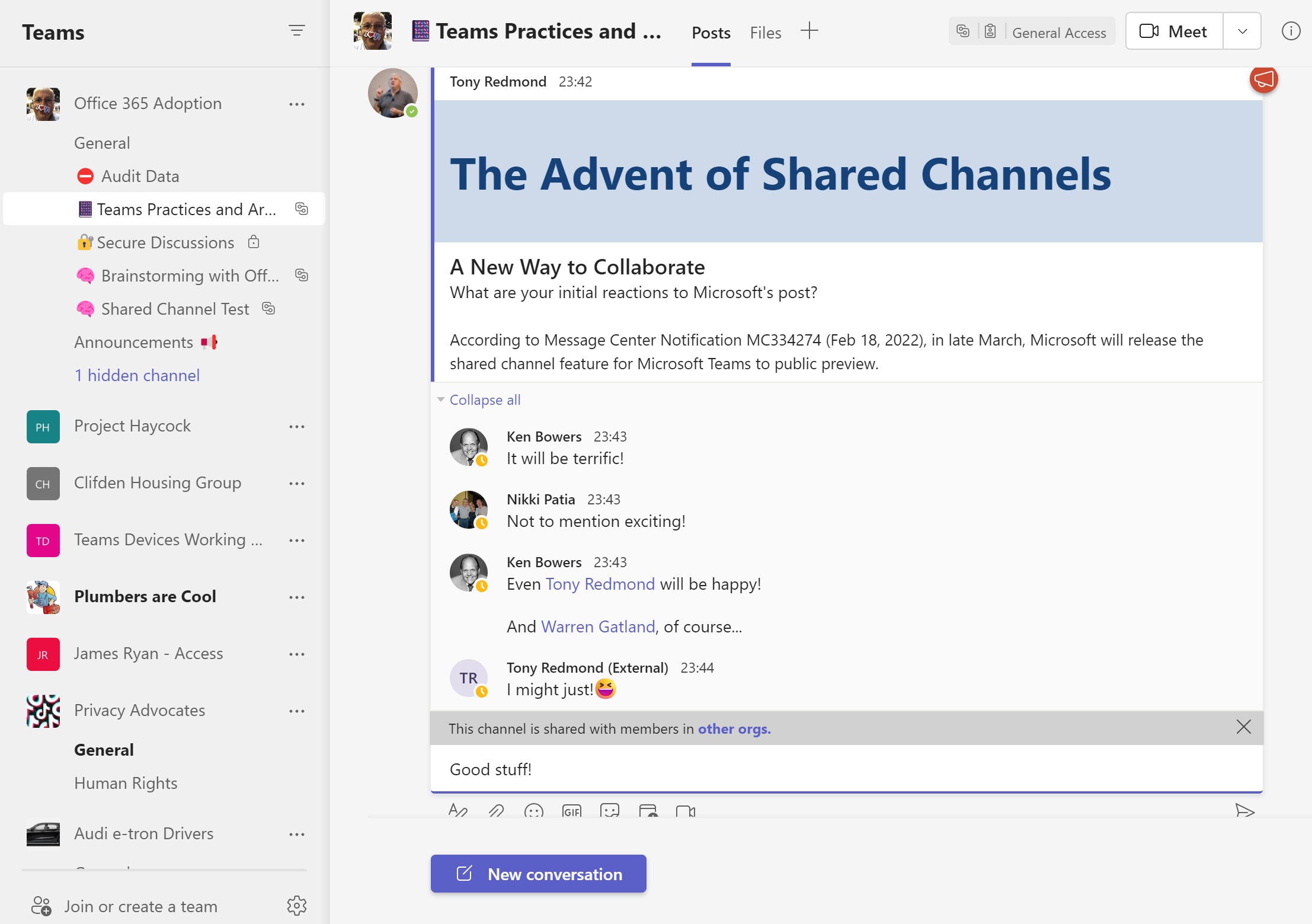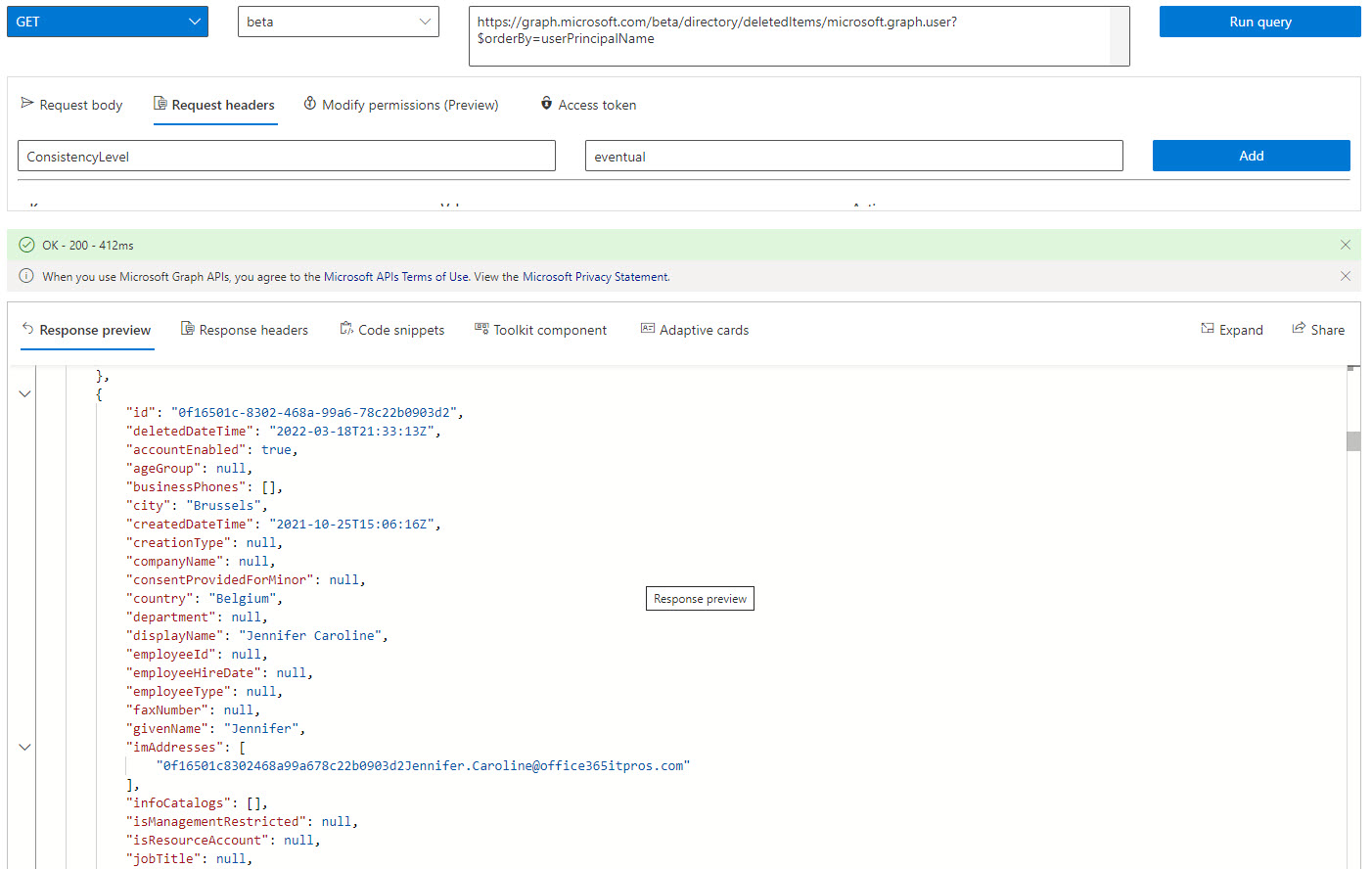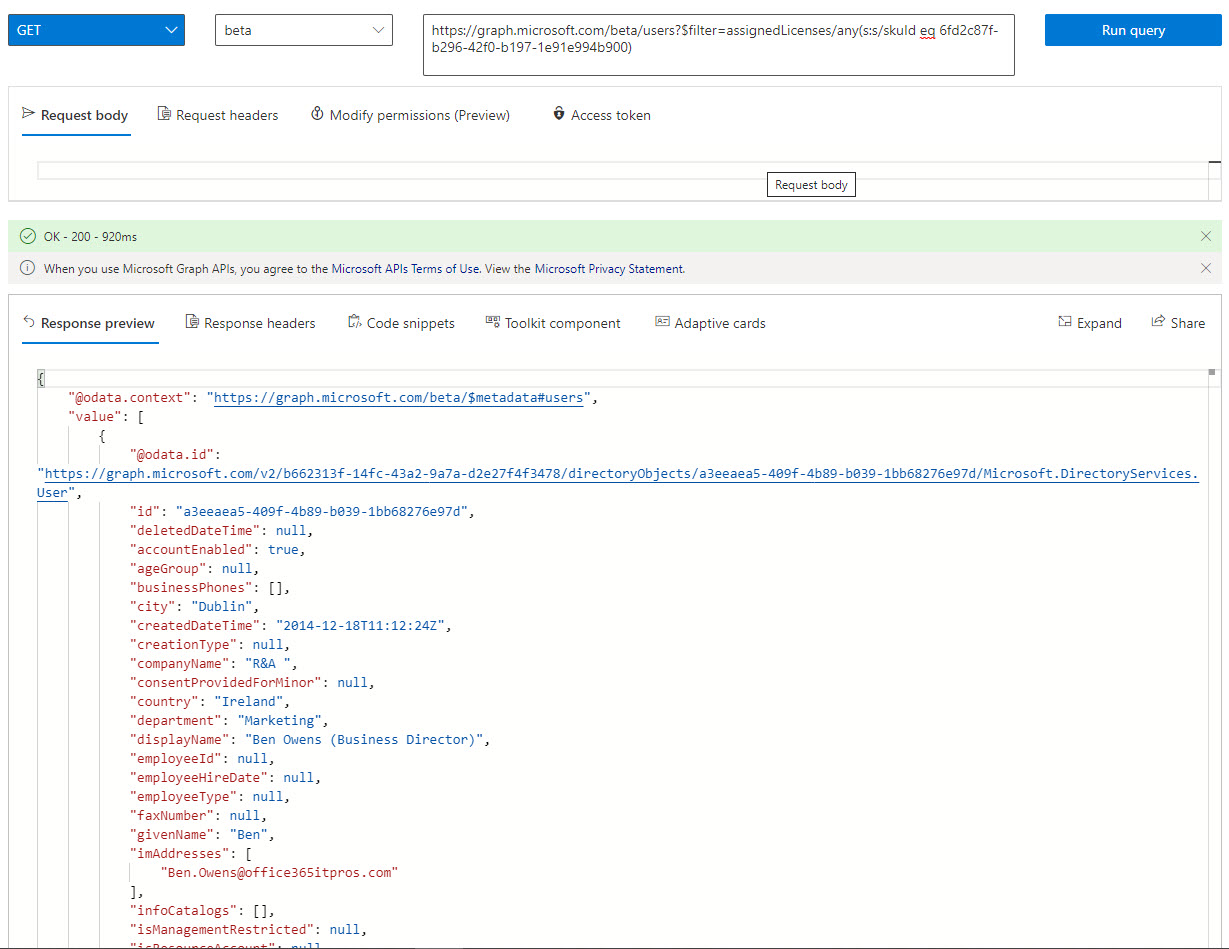The task to find manager for Entra ID accounts seems simple until you find the bunch of utility accounts created by Exchange Online that should be ignored. This makes the task more “interesting” when the time comes to find user accounts that don’t have assigned managers. Eventually, all the filters work, and you have a result, but the task is more complicated than it should be.
All software has unique quirks, and the foibles of the Microsoft Graph PowerShell SDK are well known. But it’s much harder when the underlying foundation contributes to the craziness as described in this article. Graph pagination works in a specific way and Microsoft tunes the Graph to deliver great performance by reducing the set of properties returned for objects. Both can cause concern for developers.
The Teams and Groups activity report is a popular script that helps administrators identify inactive teams and groups within a Microsoft 365 tenant. The script code has been developed over the years. The last version converted to Graph API requests to improve performance. This time, the upgrade is to use the Microsoft Graph PowerShell SDK to make the code easier to maintain.
This article describes how to use the Microsoft Graph PowerShell SDK to report delegated permission assignments to user accounts and apps. Like in other parts of Microsoft 365, the tendency exists to accrue delegated permissions for both user accounts and apps over time. There’s nothing wrong with having delegated permissions in place, if they are appropriate and needed – and that’s why we report their existence.
Deciding whether to use Microsoft Graph PowerShell SDK cmdlets or Graph API requests is sometimes not easy. Some say that it’s best to use Graph API requests everywhere and avoid the complication of possibly buggy Graph PowerShell SDK cmdlets. My approach is different. I start with Graph PowerShell SDK cmdlets and only resort to Graph API requests when absolutely necessary. It works for me!
Some problems emerged in V2.17 and V2.18 of the Microsoft Graph PowerShell SDK. In one case, Microsoft changed cmdlet names. In another, it’s an identity issue caused by incompatible assemblies. In both cases, questions have to be asked about the level of testing done by Microsoft before they release a new module. Bugs do happen, but testing should catch the obvious problems.
A reader asked if it is possible to script sending chat messages. In this article, we explore how to compose and send Teams urgent messages to a set of recipients using Microsoft Graph PowerShell SDK cmdlets. The conversation with each recipient is a one-to-one chat that Teams either creates from scratch or reuses (if a suitable one-on-one chat exists).
Although the trend is toward password authentication, many Microsoft 365 tenants still use passwords and some force users to change passwords regularly. This article explains how to create a password expiration report with PowerShell. The script caters for where a tenant password expiration policy is set for passwords to never expire. If anything else, it’s yet another example of how to extract information using PowerShell.
A recent article by a Microsoft MVP attempted to lay out a case that tenants should not use Microsoft 365 PowerShell and use ISV products instead. It’s a silly position to argue. PowerShell is an important automation tool for administrators that can’t be replaced by any ISV product. ISV products have their place and fill many gaps, but arguing to dump PowerShell and use ISV products instead just can’t be justified.
Microsoft plans to change the way that the Teams website channel tab works in early April 2024. Instead of the client opening a site, a new browser tab opens. Microsoft says that the change better aligns with best practice for web security and privacy. Even so, it creates an administrative challenge to find what teams have website channel tabs that might need to be adjusted. Fortunately, we have a script to do just that.
It’s possible to use PowerShell to create a report detailing the SharePoint Online site URLs used with Teams. My first attempt used the Exchange Online module, but is the Graph any faster? As it turns out, not really. At least, not for interactive sessions using the Microsoft Graph PowerShell SDK (things are different when running SDK code using a registered app). I tried several approaches, but Graph permissions got in the way every time.
After a while, you discover the holes in any technology. In the case of the Microsoft Graph PowerShell SDK, some inconsistencies await unwary developers. The SDK doesn’t like $Null, doesn’t support pipelining, insists on specific property casing at times, sometimes accepts user principal names and sometimes doesn’t, and sticks valuable data in hash tables hiding in a property you might know nothing about. Good as it is to have the SDK cmdlets, they need to be treated with care as you transition from the old Azure AD and MSOL modules.
Microsoft makes a 30-day Teams Premium trial license available to allow customers to test the premium features. Once the trial finishes, it’s a good idea to clean up and remove the Teams Premium trial licenses from the Azure AD accounts that participated in the trial, especially as the trial license has the same display name as the paid-for Teams Premium license. You can accomplish the task through the Microsoft 365 admin center, but we explain how to do the job with PowerShell too. The same technique works to remove any specific license from a set of user accounts.
The Microsoft 365 Groups Report (membership of groups and teams) originally used the Azure AD and Exchange Online PowerShell modules. Now its code uses only cmdlets from the Microsoft Graph PowerShell SDK. It’s an example of the kind of update that many organizations are going through due to the upcoming deprecation of the Azure AD and MSOL modules.
Azure AD Guest Accounts have a habit of becoming stale or obsolete as time progresses. Guest accounts created to share documents or to be a member of a long-forgotten team or group remain in Azure AD until someone comes to clean them up. This article explains how we refreshed a popular script to use cmdlets from the Microsoft Graph PowerShell SDK to report guest accounts with different degrees of staleness.
Microsoft has released the first public preview of the Microsoft Graph PowerShell SDK V2.0. Although the new version delivers some welcome functionality, it contains some contentious proposals such as dividing the SDK into V1.0 and beta modules and using different names for the beta cmdlets. It would be nice if Microsoft fixed some of the basic group and user cmdlets before they imposed more work on PowerShell developers.
Microsoft will deprecate the Azure AD and MSOL PowerShell modules in June 2023. It’s time to convert scripts that use cmdlets from these modules and the Microsoft Graph PowerShell SDK is probably the best answer. This article explains how to generate a report of Exchange Online distribution list memberships, a task often handled in the past with Azure AD cmdlets.
Microsoft Teams doesn’t come with a Teams Directory, so it’s hard to know if a suitable team already exists when people ask for a new team. This fact contributions to teams sprawl where multiple teams exist to serve the same purpose. Teams sprawl creates an obstacle to effective collaboration and runs the danger that some important information is tucked away inside teams that no one ever goes near. Creating a Teams Directory helps team owners and users know what teams already exist inside a tenant. It’s an idea that just makes sense.
In most situations, it’s a good idea to enable Azure AD accounts for SSPR (self-service password reset) to avoid the need for administrators to update user accounts when things go wrong. This article explains how to report accounts that are not yet set up to use SSPR. It’s a check that should happen regularly, perhaps with the aid of Azure Automation.
A script written by a Microsoft program manager to remove authentication methods from an Azure AD account caused me to write a script to capture all the authentication methods used in a tenant. I have other similar scripts, but this one records some additional detail for each method. And I have a moan about why the Microsoft Graph PowerShell SDK includes so many cmdlets for interacting with authentication methods. Some consolidation would be nice.
Cmdlets in the Microsoft Graph PowerShell SDK module can interact with many types of Microsoft 365 data using Graph API requests. Adding the Debug parameter gives you an insight into what happens when SDK cmdlets run Graph requests. The knowledge can help you write better code and avoid mistakes, and that’s always a good thing.
Time is ebbing away and the date when the Azure AD PowerShell modules will start not to work is approaching. Microsoft wants customers to upgrade to the Microsoft Graph PowerShell SDK or Graph API requests. That’s fine, but a knowledge gap exists because most of the examples – including in Microsoft’s own documentation – for how to interact with Azure AD via PowerShell use the old modules. And then every other blog on the planet (with some notable exceptions) does the same. So we have work to do to bridge the knowledge gap and help people to make the transition.
The Azure AD PowerShell module allows guest accounts to sign into target tenants and update their account photo there. The Microsoft Graph PowerShell SDK includes a cmdlet to do the job, but it doesn’t work when connected to a target tenant. Permissions are the reason why, which is what we explain in this article.
Teams shared channels are now in public preview, meaning that many organizations are trying them out to see how effective a means of collaboration these channels are. One of the administrative challenges of implementing shared channels for cross-tenant collaboration is knowing who uses the channels. An answer can be found in the Azure AD sign-in logs, but only after you go looking.
Assigning Azure AD roles to user accounts is the way users receive permissions to perform certain administrative actions. You can automate these assignments using cmdlets from the Microsoft Graph PowerShell SDK. That is, until the time comes to remove assignments.
The Microsoft Graph SDK for PowerShell includes cmdlets to create Entra ID Groups and manage those groups afterward. The cmdlets work and in some places they are screamingly fast compared to Exchange Online or Azure AD cmdlets. In other places, the cmdlets are a tad bizarre and expose a little too much of their Graph underpinnings. Oh well, at least after reading this article, you’ll know where the holes lie.
With the demise of the AzureAD and MSOL PowerShell modules on the horizon, it’s time to figure out how to upgrade scripts to use cmdlets from the Microsoft Graph PowerShell SDK. This article books at basic account management and shows how to update, delete, restore, and find Entra ID user accounts using SDK cmdlets.
Microsoft has announced that it will be possible to recover a deleted service principal by the end of May. This is good news because it means that an accidental deletion can’t wreak the kind of havoc it can today. Microsoft hasn’t updated the APIs to manage soft-deleted service principals yet, but we can get an insight into what’s likely to happen by investigating how to manage deleted Entra ID accounts using cmdlets from the Microsoft Graph PowerShell SDK.
Lots of news has emerged from Microsoft recently regarding the deprecation of the Azure AD PowerShell module and the older MSOL module. Although dates have slipped from the original June 30, 2022 deadline, the signs are that Microsoft will retire the modules in early 2023. However, the Azure AD and MSOL license management cmdlets will stop working on August 26, 2022, so that’s the immediate priority for script upgrades.
Teams tags appeared in early 2020 as a method to address subsets of a team membership in channel conversations. Microsoft doesn’t provide a method to report what teams use tags and what those tags are, but we can find out using the Graph APIs. In this article, we show how to use the Microsoft Graph PowerShell SDK to create a report of all teams which use tags, the names of the tags, and the team members assigned the tags.
Microsoft is removing TLS 1.0 and 1.1 from Microsoft 365. This has been well flagged, but tenants might not understand the impact on PowerShell scripts which send email using the Send-MailMessage cmdlet and SMTP AUTH. In a nutshell, unless you force PowerShell to use TLS 1.2, attempts to send messages via Exchange Online will fail. It’s time to check those scripts and ,consider how to move away from SMTP AUTH and Send-MailMessage.
A reader asked how to find when Azure AD accounts received certain licenses. As it turns out, this isn’t as simple as it seems. PowerShell can tell use when user accounts are enabled with service plans, but to get dates for licenses (products or SKUs), we need to go to the Graph API, and those dates aren’t quite there yet. In any case, it’s an interesting question which deserves some exploration to see if we can find an answer.
Understanding how to create effective queries using the Microsoft Graph APIs takes some work, especially with some of the more complex filters used to refine the data returned by the Graph. In this article, we look at how filters using lambda qualifiers work and explore some examples of these qualifiers in use.
Anyone writing PowerShell code against Azure Active Directory probably uses the Azure AD module. In June 2022, Microsoft will deprecate the API underpinning the Azure AD module. Tenants who want to use PowerShell to create scripts to automate administrative processes will need to move to Graph API calls or use the Microsoft Graph PowerShell SDK. Either way, there’s a bunch of work to do to upgrade scripts.
